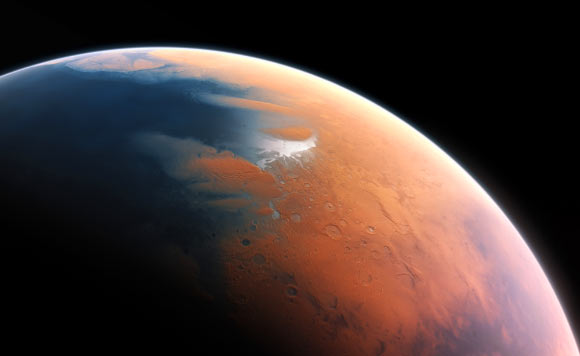NASA’s Curiosity rover has found a series of symmetrical, 10-m- (33-foot-) high gravel ridges — sedimentologic evidence of ancient giant floods — in Gale Crater on Mars.
Source: Sci News
“We identified megafloods for the first time using detailed sedimentological data observed by the rover Curiosity,” said Dr. Alberto G. Fairén, an astrobiologist in the Department of Astronomy at Cornell University and Spain’s Centro de Astrobiología.
“Deposits left behind by megafloods had not been previously identified with orbiter data.”
As is the case on Earth, geological features including the work of water and wind have been frozen in time on Mars for about 4 billion years. These features convey processes that shaped the surface of both planets in the past.
“This case includes the occurrence of giant wave-shaped features in sedimentary layers of Gale Crater, often called megaripples or antidunes that are about 19 m high and spaced about 137 m (450 feet) apart,” said Professor Ezat Heydari, a researcher in the Department of Physics, Atmospheric Sciences, and Geoscience at Jackson State University.
“The antidunes are indicative of flowing megafloods at the bottom of Gale Crater about 4 billion years ago, which are identical to the features formed by melting ice on Earth about 2 million years ago.”

The most likely cause of the Mars flooding was the melting of ice from heat generated by a large impact, which released carbon dioxide and methane from the planet’s frozen reservoirs.
The water vapor and release of gases combined to produce a short period of warm and wet conditions on the Red Planet.
Condensation formed water vapor clouds, which in turn created torrential rain, possibly planetwide.
That water entered Gale Crater, then combined with water coming down from Mount Sharp to produce gigantic flash floods that deposited the gravel ridges in the Hummocky Plains Unit and the ridge-and-trough band formations in the Striated Unit.
“Early Mars was an extremely active planet from a geological point of view,” Dr. Fairén said.
“The planet had the conditions needed to support the presence of liquid water on the surface — and on Earth, where there’s water, there’s life.”
“So early Mars was a habitable planet. Was it inhabited? That’s a question that the next rover Perseverance will help to answer.”
The study appears in the journal Scientific Reports.
Source: Sci News

































Leave a Comment
You must be logged in to post a comment.